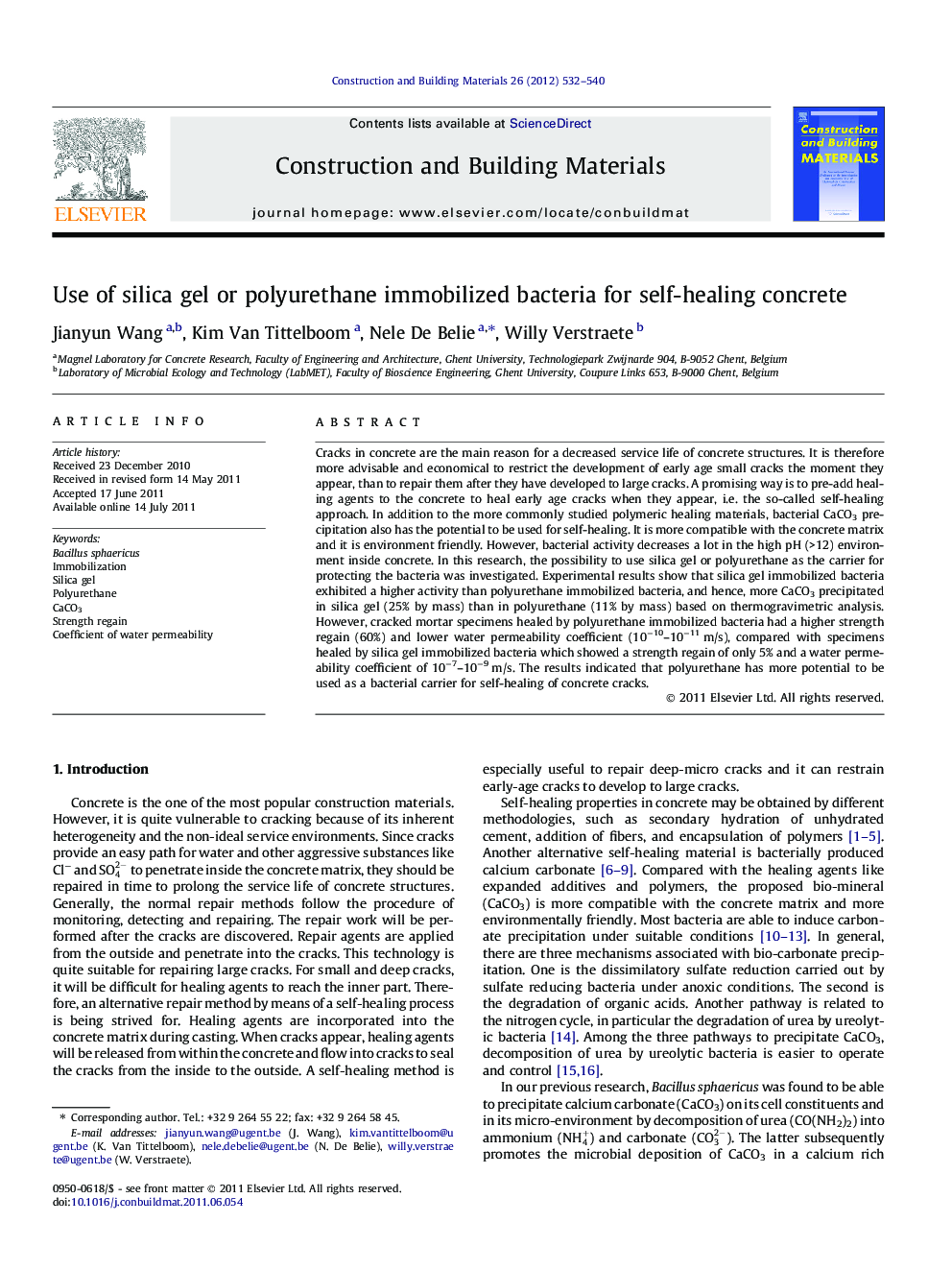| Article ID | Journal | Published Year | Pages | File Type |
|---|---|---|---|---|
| 259185 | Construction and Building Materials | 2012 | 9 Pages |
Cracks in concrete are the main reason for a decreased service life of concrete structures. It is therefore more advisable and economical to restrict the development of early age small cracks the moment they appear, than to repair them after they have developed to large cracks. A promising way is to pre-add healing agents to the concrete to heal early age cracks when they appear, i.e. the so-called self-healing approach. In addition to the more commonly studied polymeric healing materials, bacterial CaCO3 precipitation also has the potential to be used for self-healing. It is more compatible with the concrete matrix and it is environment friendly. However, bacterial activity decreases a lot in the high pH (>12) environment inside concrete. In this research, the possibility to use silica gel or polyurethane as the carrier for protecting the bacteria was investigated. Experimental results show that silica gel immobilized bacteria exhibited a higher activity than polyurethane immobilized bacteria, and hence, more CaCO3 precipitated in silica gel (25% by mass) than in polyurethane (11% by mass) based on thermogravimetric analysis. However, cracked mortar specimens healed by polyurethane immobilized bacteria had a higher strength regain (60%) and lower water permeability coefficient (10−10–10−11 m/s), compared with specimens healed by silica gel immobilized bacteria which showed a strength regain of only 5% and a water permeability coefficient of 10−7–10−9 m/s. The results indicated that polyurethane has more potential to be used as a bacterial carrier for self-healing of concrete cracks.
► Silica gel and polyurethane were used to immobilize and protect bacteria. ► Bacteria can precipitate CaCO3 after being immobilized. ► Bacteria have a higher activity in silica gel than in polyurethane. ► Bacteria can precipitate CaCO3 in a mimic self-healing process. ► More self-healing efficiency were observed in the cracked specimens treated by polyurethane immobilized bacteria.
